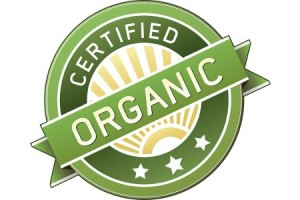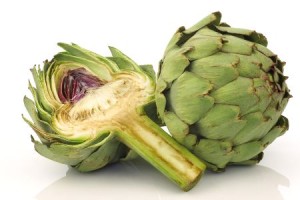Mushrooms often take a back seat when it comes to getting attention about nutrition. Most wouldn’t consider them to be a superfood, but they absolutely are.
Typically, mushrooms are an accompaniment to dishes like salads, burgers, pizza, omelets, or pasta sauces. Under-appreciated is an understatement. With the exception of the portabella mushroom, which is commonly used to replace beef or other meats in vegetarian burgers or simply as a steak, it’s rare to find mushrooms as a main ingredient in a meal or as an entrée.
Making mushrooms more of a main course is easy, tasty, and wise. Easy because there are so many different ways to include them in a more substantial way – there’s no shortage of recipes. Tasty because there are so many types of mushrooms, with a variety of textures, qualities, and flavors. Wise because mushrooms are loaded with health-promoting properties and phytonutrients, along with a smattering of essential nutrients.

See what other foods the Trim Down Club recommends–and which 5 foods to avoid.
It is recommended that mushrooms be cooked before consumption, for two important reasons:
- Mushrooms have very tough cell walls, making them largely indigestible when uncooked. Cooking makes the nutrients and other beneficial substances available to the body.
- Mushrooms, especially the most common types, are high in toxins known as hydalazines, including those linked to cancer. Thorough cooking has been shown to destroy these toxins.
Where people struggle is with knowing how to include them as the main ingredient of an entrée, and how they can be used beyond their traditional role as a topping or accent.
Types of mushrooms:
White mushrooms
Also called button mushrooms, they are one of the most popular varieties around. They come in three general sizes: small, medium, and jumbo. They can be pure white or off-white.
They have a mild woodsy flavor, and are commonly served in soups, salads, appetizers, and entrees – but can make a great side dish or vegan entrée. It is recommended that they only be consumed cooked.
 Crimini
Crimini
Also known as brown mushrooms, they are very similar to white mushrooms in both size and texture, but have a more intense, earthy flavor than their white counterparts.
Like white mushrooms, crimini mushrooms should be eaten cooked. They can easily stand in for white mushrooms in any recipe or use as in salads, soups, and omelets, or as a side dish or entrée.
Portabella
Portabella mushrooms are brown mushrooms that come in two general sizes – regular (fully-grown) and ‘baby’. They are considered the largest of the domestic mushrooms, with an impressive cap that can be 6 inches (15 cm) in diameter. They tend to have an earthy taste and are drier than smaller mushrooms, lending to their meatier texture.
It’s this texture that lends to the portabella’s versatility as a staple for vegetarian burgers and vegan steaks because they can be grilled; they hold up well to being baked, too. It is recommended that they only be consumed cooked.
Oyster
Unique with their whitish-yellow gill-like structures running up their short, crooked stems, oyster mushrooms have a light to dark brown, gray or even a pale yellow, funnel-shaped cap ranging in size from 1 to 4 inches (2.5 to 10 cm).
They have a delicate, mild flavor with a velvety texture and can be used in a variety of dishes.
Shiitake
Famous for their woody and meaty taste, Shiitake mushrooms also have a large fleshy cap ranging from 5 to 10 cm (2 to 4 inches) in diameter which are tan to dark brown in color.
They have a soft and spongy texture when raw but have a distinct meaty flavor and texture when cooked. They are commonly found in Asian cooking and frequently used in stir-fries.
Enoki
Probably the most unique looking of all domestic mushrooms, enokis have long, slender white stems with tiny, firm, dome-like caps.
One of the mildest-tasting mushrooms, enoki have a nice crunch and can be eaten raw or cooked. They are commonly found in Asian cuisine, but can make a great garnish for any salad, soup, or and sauce, as well as great sandwich or wrap filler in place of, or in addition to, the usual suspects like lettuce, tomatoes, onions, avocado, and sprouts.
King Oyster
One of the more sturdy looking mushrooms, King Oyster mushrooms have a stout, rugged-looking white stem with a light tan cap.
The sturdy stem has a thick flesh which is chewy from top to bottom, and unlike most mushrooms, won’t become too soft when cooked, but rather maintains its firmness. The flavor, while woodsy, is more delicate and sweet. These are used in French, Italian, Mediterranean, and Chinese cuisines, and stand up well to sautéing, stir-frying, and grilling.
More Nutrition than Meets the Eye
Not only are mushrooms versatile and good tasting, many may be surprised to learn that these seemingly unassuming plants pack some of the most powerful health benefits. They give a lot of bang for their nutritional buck. For very few calories (about 25 calories per 100g of mushrooms on average) they are an excellent source of key nutrients such as potassium, B2 (riboflavin), B3 (niacin), B5 (pantothenic acid), selenium, copper, and zinc, as well as a bit of good quality protein. And they’re sodium-free
Antioxidants Abound
Other health promoting properties of mushrooms are found in the non-traditional vitamin and mineral route. In Asian traditions, mushrooms are regarded also as medicine because of their apparent support for the body’s natural defenses. Mushrooms are packed with a unique antioxidant called l-ergothioneine, containing higher concentrations than either of the two dietary sources previously believed to contain the most: chicken liver and wheat germ. Studies have shown that shiitake, oyster, king oyster, and maitake mushrooms contain the highest amounts of l-ergothioneine, with up to 13 mg in an 3-ounce/86g serving. This equals forty times as much as is found in wheat germ. Antioxidants help to protect body cells and tissues against damage, much like a shield protects a warrior from the onslaught of an enemy’s arrow. This particular antioxidant is heat-stable, and therefore present in both raw and uncooked mushrooms.
Mushrooms also have a form of carbohydrate called beta-glucan which extensive research has shown to have a positive effect on the immune system, specifically enhancing the activity of natural killer cells. Beta-glucan seems to help reduce the risk of hormone-dependent cancers such as prostate and breast. And like most plant-based foods, mushrooms have anti-inflammatory properties and can be supportive of good bacteria in the intestines, which may help to positively influence the immune system.
Below are tips for selecting, storing, and cleaning mushrooms.
How to Select:
- Purchase mushrooms that are firm with a fresh, smooth appearance.
- Surfaces should be dry, but not dried out, and appear plump.
- A closed veil under the cap indicates a delicate flavor, while an open veil and exposed gills mean a richer flavor.
How to Store:
- Mushrooms keep for up to a week in the refrigerator.
- Keep mushrooms in original packaging until ready to use.
- Once opened, store mushrooms in a porous paper bag for a prolonged shelf-life.
- Avoid storing in airtight containers, as this causes condensation, which quickens spoilage.
- Fresh mushrooms should never be frozen, but frozen sautéed mushrooms will keep for up to one month.
How to Clean:
- Brush off any dirt with a damp paper towel, fingers, or soft vegetable brush.
- Rinse fresh mushrooms only briefly under running water and pat dry with a paper towel. Never soak them, as they absorb moisture.
- Trim the end of the stem of most mushrooms before using; remove the stem from shiitake mushrooms.
Learn more about the Trim Down Club.
* References
Antioxidants in mushrooms
Nutraingredients.com. Research: Make room for mushrooms in antioxidant rankings. 2006.
Lin SY, Chen YK, Yu HT, Barseghyan GS, Asatiani MD, Wasser SP, Mau JL. Comparative study of contents of several bioactive components in fruiting bodies and mycelia of culinary-medicinal mushrooms. Int J Med Mushrooms. 2013;15(3):315-23.
Beta-glucan and immunity
Akramiene D, Kondrotas A, Didziapetriene J, Kevelaitis E. Effects of beta-glucans on the immune system. Medicina (Kaunas). 2007;43(8):597-606.
Digestive health
Chou WT, Sheih IC, Fang TJ. The applications of polysaccharides from various mushroom wastes as prebiotics in different systems. J Food Sci. 2013 Jul;78(7):M1041-8.




I love them too, cooked. I never liked them raw so I have that going for me! After reading this I will definitely eat them more often.
Thanks
So informative. I did not know most of this.
I love mushrooms, but I have eaten them raw in salads all my life. Now I can learn to cook them as a main dish. Thanks
I really enjoy mushrooms but often wondered about different verities.
Thanks for the info great new places to start.
I love mushrooms!! :))
can you use canned mushrooms as an alternative?
How do I avoid the poisonous mushrooms?
Wow! I had no idea mushrooms were that healthful. Glad I like them. This is great – will add more to my choices of ‘free vegies’.
thanks for this info